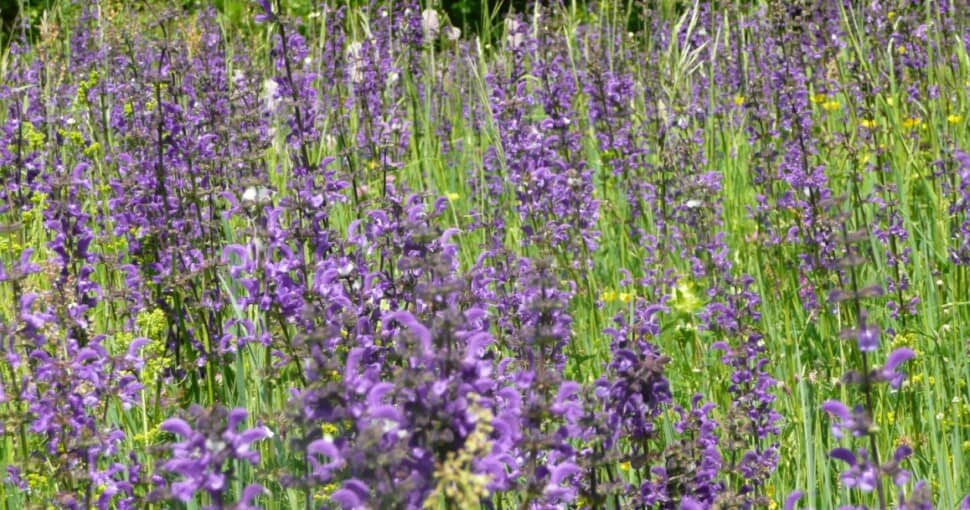Salvia (Lamiaceae) is a large genus with more than 1000 species of shrubs, herbs, annuals, and perennials. Most salvia plants are commonly called sage, like common sage (Salvia officinalis) and pineapple sage (Salvia elegans).
Contents
- 1. English Lavender (Lavandula angustifolia)
- 2. Love-Lies-Bleeding (Amaranthus caudatus)
- 3. Speedwell (Veronica)
- 4. Basil (Ocimum basilicum)
- 5. Hyssop (Hyssopus Officinalis)
- 6. Wisteria (Wisteria Sinensis)
- 7. Catnip (Nepeta cataria)
- 8. Sagebrush (Artemisia tridentata)
- 9. Silver Ragwort (Jacobaea maritima)
- 10. Catmint (Nepeta mussinii)
Salvia plants are typically identified by their square stems, flower spikes with purple, blue, red, or white flowers, and simple leaves. Salvias have oval or sword-like. And, because there are so many salvia plants, people often mistakenly think other plants are also salvias.
Some plants that are often mistaken for salvias because they look like them include:
- English lavender – sword-like leaves and purple flower spikes that look like salvia.
- Love-lies-bleeding – oval leaves and large red flower spikes that resemble salvia.
- Speedwell – sword-like plants and purple flower spikes that also resemble salvia.
- Basil – oval leaves like some salvia species and flower spikes.
- Hyssop – oval/sword-like leaves and purple flower spikes resembling salvia.
- Wisteria – purple flowers that resemble those of salvia.
- Catnip – oval leaves and purple flowers that also look like salvia.
- Sagebrush – silver sword-like leaves and flower spikes resembling salvia.
- Silver ragwort – silver leaves that look like some salvia species.
- Catmint – oval leaves and purple flower spikes resembling salvia.
Since not all salvia plants are edible, it’s also worth knowing whether all plants that look like salvia are. So stick around to learn how these 10 plants resemble salvia and how they don’t.
1. English Lavender (Lavandula angustifolia)
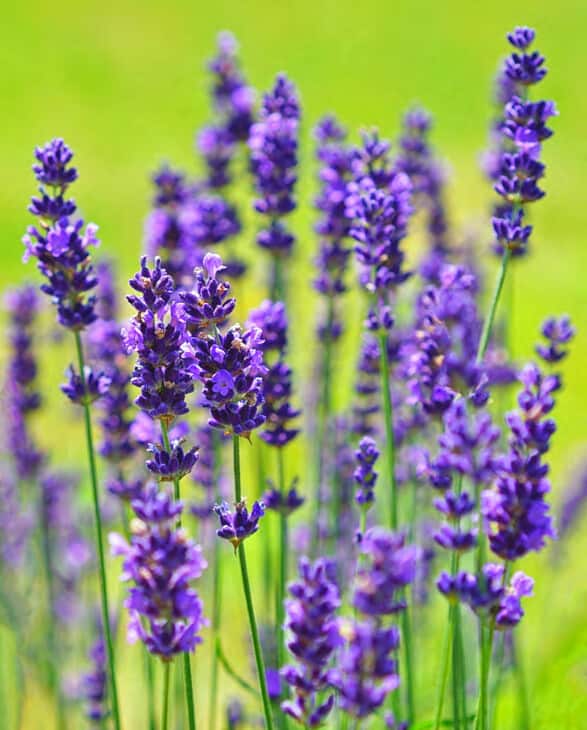
English lavender is one of the first plants you might mistake for salvia. Although English lavenders are highly recognizable because of their scent, it doesn’t stop people from assuming that lavender is a salvia species.
Like many salvias, English lavender grows up to 3 feet tall. It has long, sword-like leaves, like some salvias, like the mealy cup sage (Salvia farinacea). It also produces long, purple flower spikes resembling many salvia plants. But, of course, you’ll quickly recognize a lavender plant by its unique aroma.
And, despite the flower spikes looking similar, the individual flowers of an English lavender don’t resemble that of a mealy cup sage.
Related: 7 Plants That Look Like Lavender
2. Love-Lies-Bleeding (Amaranthus caudatus)
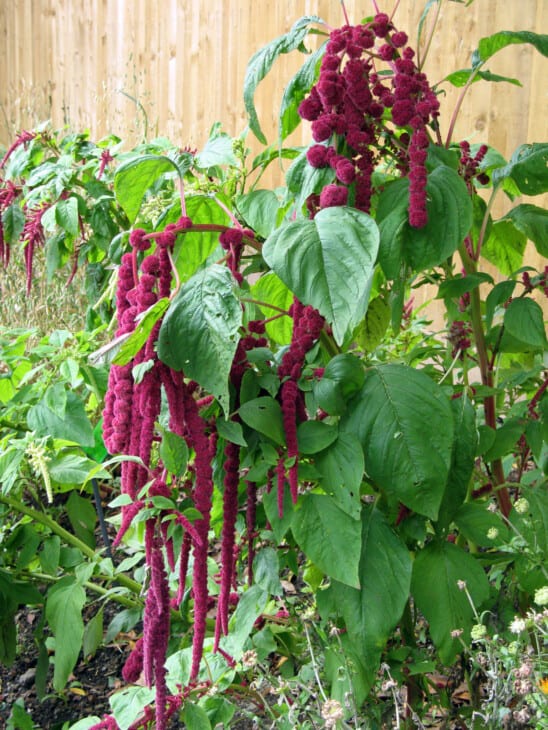
The love-lies-bleeding is an Amaranth variety with a few things in common with the salvia. It grows slightly taller than salvia, growing up to 5 feet tall. The love-lies-bleeding also has oval-shaped flowers like many salvia species.
And, what makes it look even more like a salvia, is the long, maroon-colored flower spikes. Although these flower spikes hang down from the plant instead of standing up like those of salvia, the color, and structure remind one of salvia.
Like some salvias, amaranth is also edible and has been used in cooking for centuries. However, amaranth doesn’t have a strong minty smell like many salvias, which is another way to distinguish these plants from each other.
3. Speedwell (Veronica)
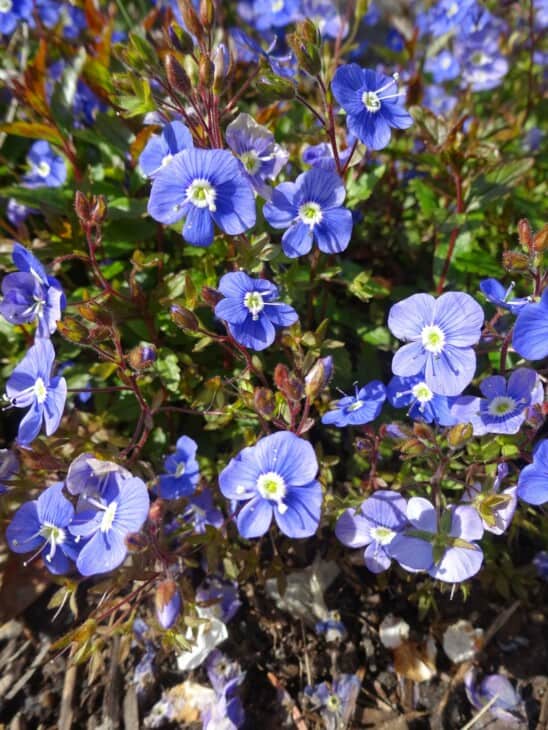
Speedwell is yet another plant with similar characteristics as a salvia, making it easy to assume that the speedwell is a salvia species. Like the salvia, it grows up to 3 feet tall and has long flower spikes. The flowers on these spikes are tiny and have a deep purple color.
Furthermore, the leaves of speedwell are long, narrow, and sword-like. While salvias are primarily found in the Mediterranean, speedwells are native to the Northern hemisphere’s temperate regions. Speedwell might look like a salvia, but it has creeping stems that sometimes form new roots.
It also has bands of white hair on the stems that make it possible to distinguish it from salvia.
4. Basil (Ocimum basilicum)
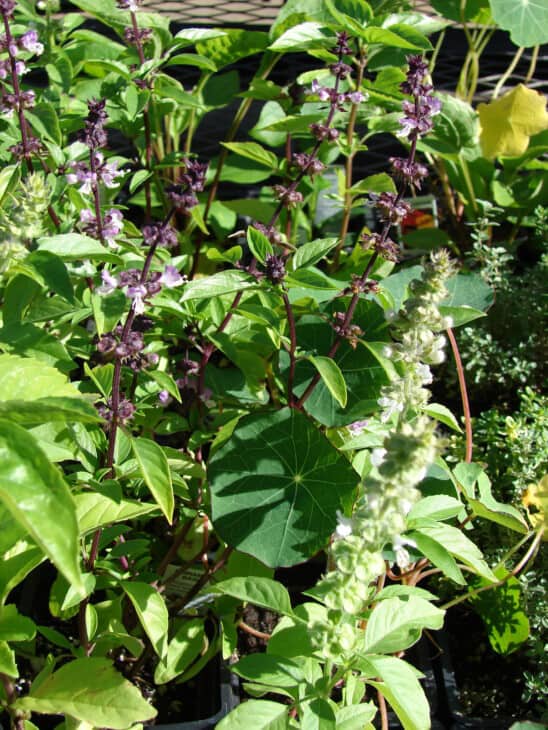
Basil is another well-known herb often used in cooking. And it has some similarities with salvia plants. Like salvia, basil stems are square and slightly hairy. In addition, Basil plants have smooth, oval-shaped leaves, similar to those of mystic spires blue salvia.
And, like many salvias, basil produces flower spikes. Some basil varieties have white flowers, while others boast purple blooms. Fortunately, you can distinguish between basil and salvia by considering their size. Basil plants typically grow up to 12 inches tall and have a unique scent.
Related: 9 Plants That Look Like Basil
5. Hyssop (Hyssopus Officinalis)
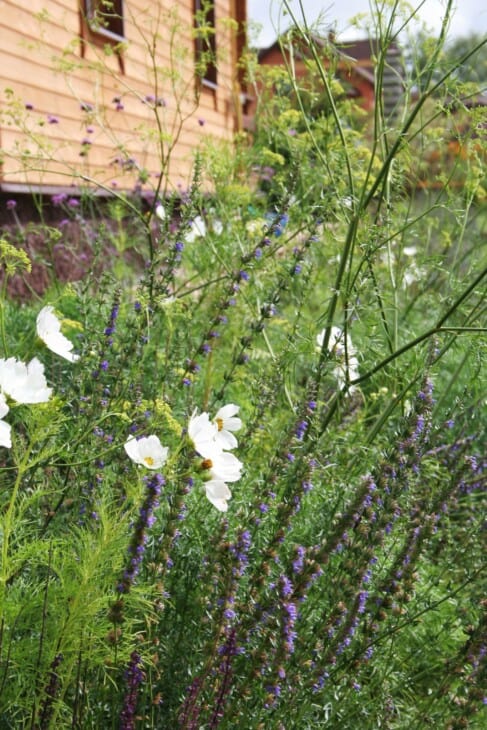
Hyssop is a perennial with some similarities to salvia plants too. It is originally from Europe and Central Asia but has also been naturalized in North America. Hyssop has oval-shaped leaves like salvia. Some varieties have smooth leaves, while others have finely serrated edges.
Depending on the variety, hyssop has long flower spikes with bright purple or blue flowers. This makes it easy to mistake a Hyssop for a salvia. However, hyssop is smaller than salvia, growing to about 1.5 feet tall. Like many salvia varieties, hyssop is edible. It has been used in the culinary world and as medicine for many years.
6. Wisteria (Wisteria Sinensis)
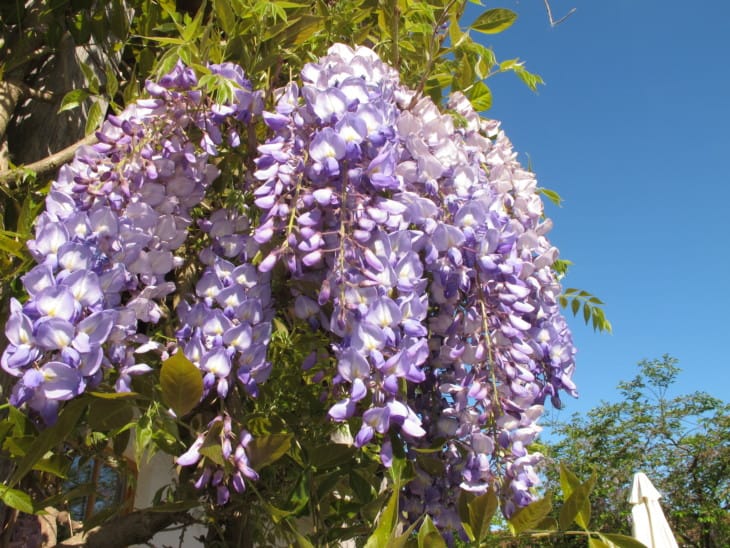
Wisteria might be much bigger than salvia, growing as tall as 30 feet. Still, it also has many things in common with salvia. Like many salvias, wisteria is native to Asia and North America. It is a hardy creeper often wrapped around other trees or fences.
Like salvia, wisteria produces long flower spikes. These spikes are covered in soft purple flowers that hang downwards from the stem. Wisteria also has oval-shaped compound leaves. Because it is a creeper, it’s relatively easy to distinguish between a wisteria and a salvia.
Related: 7 Trees Similar To Wisteria
7. Catnip (Nepeta cataria)
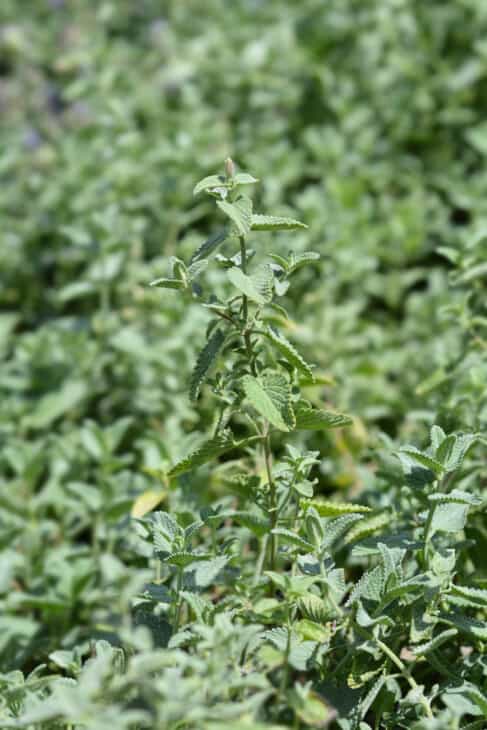
Catnip is a weed native to Africa, Asia, and Europe. It was also brought to North America, where it now grows wildly. Like many salvia species, it is a herb with oval-shaped leaves with serrated edges. Catnip also produces flower spikes with bright purple flowers.
Because catnip has so many qualities in common with salvia, it is often mistaken for a salvia species. However, catnip is actually part of the mint family. It is much smaller than salvia plants, growing only about 40 inches tall. Still, it looks remarkably similar to young salvia.
8. Sagebrush (Artemisia tridentata)
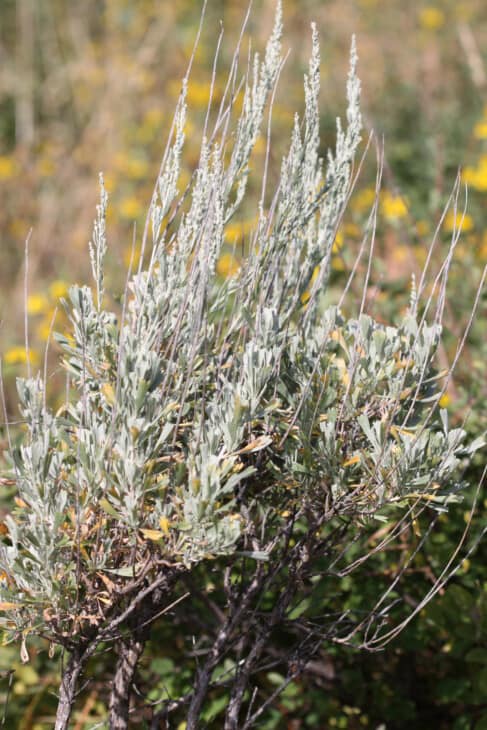
As the name suggests, sagebrush also shares many traits with salvias. Sagebrush is native to North America and grows between 3 and 15 feet tall. Smaller sagebrush shrubs look almost identical to some salvia plants. Sagebrush leaves are sword-like and have scalloped edges.
The entire plant is covered in fine white hairs that make the leaves look silver. Sagebrush also produces flower spikes with tiny yellow flowers. And, although most parts of the plant look similar to salvia plants, the flowers don’t look the same as any salvias, which is how you can tell these plants apart.
Related: 9 Plants That Look Like Sage
9. Silver Ragwort (Jacobaea maritima)
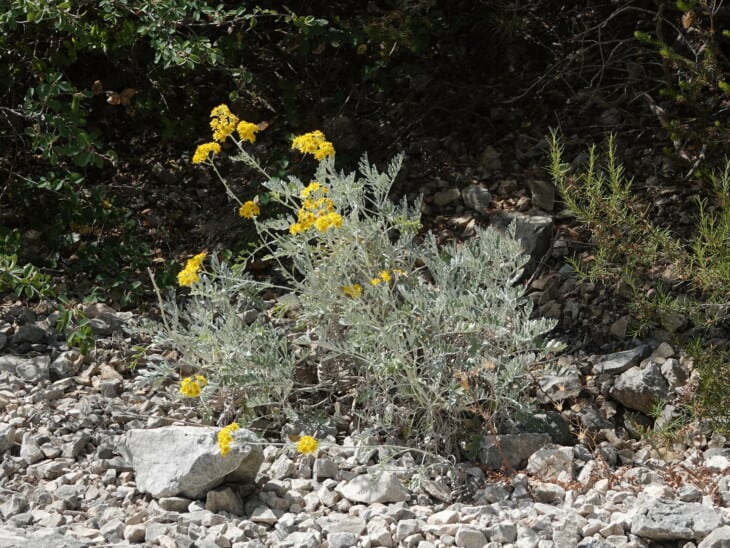
Silver ragwort, or dusty miller, is another shrub resembling salvia. Like silver sage, silver ragwort is covered in fine white hairs that make the leaves appear silver. Some leaves are round, while others have lobes resembling maple leaves.
Silver ragwort plants also produce yellow flowers. However, they don’t grow on pinnacles like salvia flowers. Instead, they grow in round bunches between the foliage. This plant is similar in size to salvia, growing between 1 and 2 feet tall. So, when they aren’t in bloom, you might mistake silver ragwort for salvia.
Related: 6 Plants That Look Like Ragwort
10. Catmint (Nepeta mussinii)
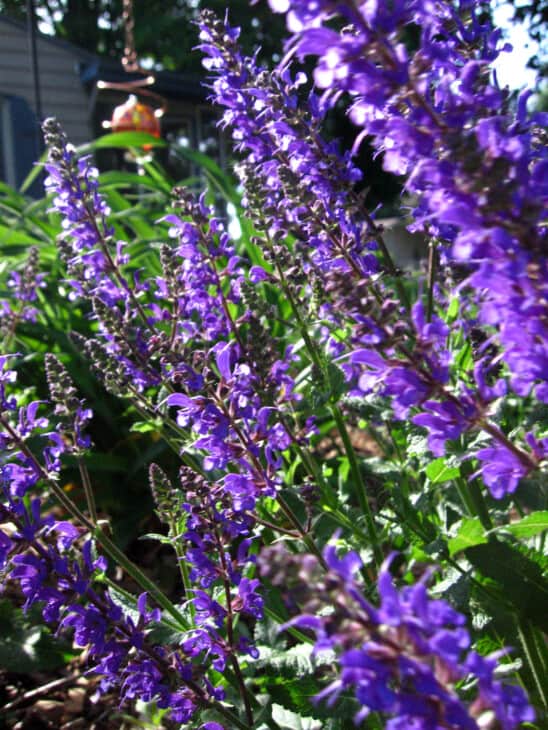
Catmint is closely related to catnip and, therefore, shares many traits with salvia. Catmint is native to the temperate regions of Asia, Europe, and Africa. It has a strong scent, which is one way of identifying this plant.
Like many salvia plants, catmint has oval-shaped leaves. However, the leaves have tiny, serrated edges, which salvia plants don’t have. Catmint also produces long, purple flower spikes, making it look more like salvia. It is also the same size as salvia, reaching an average height of 3 feet. Smelling the plant is the primary way to distinguish between catmint and salvia.

